Why you can trust TechRadar
Once you've managed to set up your Sony Smartwatch 2 you can actually get round to using it.
First up to get to the app screen on the Smartwatch 2 you'll either then to press the power/lock key twice, or hit it once and then tap the home keep below the screen.
That's because the first press turns on the backlight, allowing you to see the time in darker situations, and the second tap will take you through to the main interface.
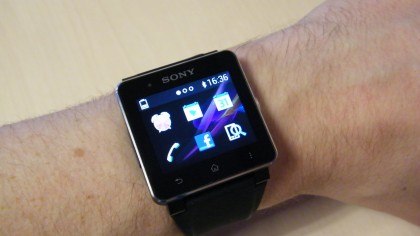
What you get is a very basic version of Android will tiny application tiles appearing on screen - there's six on display at a time and you can slide sideways to see more - just as you would do on your phone.
Hit the menu key before the screen and you have the option to order the applications by alphabet or most recently used.
The screen wasn't always the most responsive and sometimes my swipes wouldn't convert into a page movement - you need to be relatively slow and controlled, a quick swipe will general result in you staying on the same page.
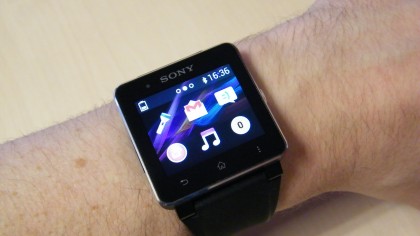
Issues with screen responsive were witnessed in other areas as well, such as selecting apps on the Smartwatch 2 and options in the menus.
While poor screen responsive was the issue some of the time, at other points the lowly power of the 180MHz processor was to blame for a sluggish reaction time.
This lead me to believe my presses hadn't registered, when it fact the Smartwatch 2 was just taking its time. This made usage slightly frustrating as quickly checking a message suddenly took longer than getting my phone out.

Along the top of the display is a slender notifications bar displaying the time, clock and Bluetooth symbol, and like in Android you can pull this down to see your latest notifications.
There's no quick settings or additional widgets on show here, basically because there's no space, and to be honest I didn't really expect anything else to be hidden in here.
For those that want to be able to tweak quick settings on their phones from the Smartwatch 2, there are numerous offerings to be found in the Smartwatch's app store.
You can tweak a handful of things on the Smartwatch 2 via the settings app where screen brightness, vibrate toggle and clock faces are among the options.
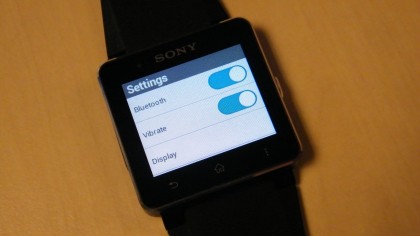
Bluetooth can be toggled on and off here, but as I've already mentioned in this review turning it off will see the connection ended between the SmartWatch 2 and your smartphone.
The Smartwatch 2 will still function without this connection, with the clock, alarm, timer and flashlight all working as standalone capabilities.
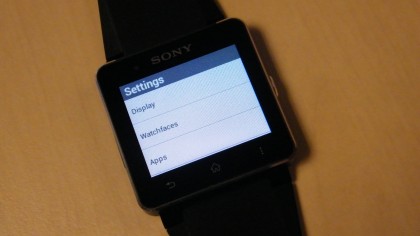
Brightness can be set to adjust in the same way that auto-brightness features work on your handset. I found this to be particularly useful, as the lowest setting can be a bit difficult to see outside.
There are 10 different watch faces that can be chosen; seven analogue and three digital. In all, I was a little underwhelmed by what was on offer, especially given that the date only appears on three faces.
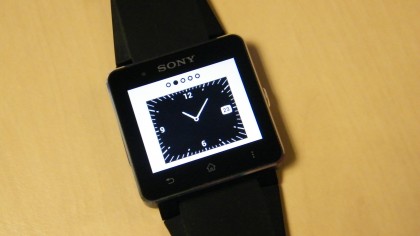
You can also set up a pin from within the settings menu which keeps all your notifications away from the prying eyes of anyone who happens to get hold of your Smartwatch 2.
The pin only activates after 5 minutes pass since you last interacted with the SmartWatch 2, it won't automatically engage as soon as you lock the device - so keep that in mind.
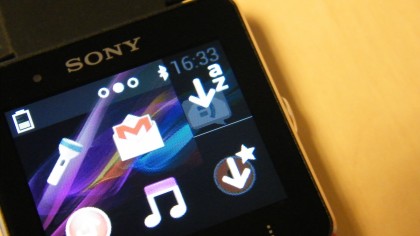
Everything is pretty self explanatory on the whole, and if you're used to Android the Sony Smartwatch 2 isn't difficult to use - once you've set it up that is.
It's not the most attractive of interfaces however and that's down to the poor quality display which results in an extremely pixelated experience - it may be functional, but it's not going to win you over with looks.
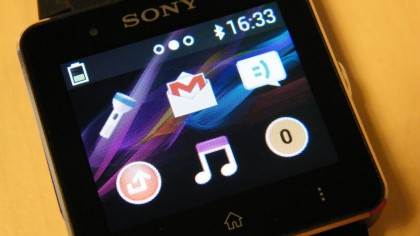
Another issue with smartwatches is the size of the screen and thus the size of the text on said screens. The Sony Smartwatch 2 is no exception here, with text tiny and no way to increase it.
If your eyesight isn't the best there's really not much point getting the Smartwatch 2, as it'll be a chore every time you come to look at it.

TechRadar's former Global Managing Editor, John has been a technology journalist for more than a decade, and over the years has built up a vast knowledge of the tech industry. He’s interviewed CEOs from some of the world’s biggest tech firms, visited their HQs, and appeared on live TV and radio, including Sky News, BBC News, BBC World News, Al Jazeera, LBC, and BBC Radio 4.
